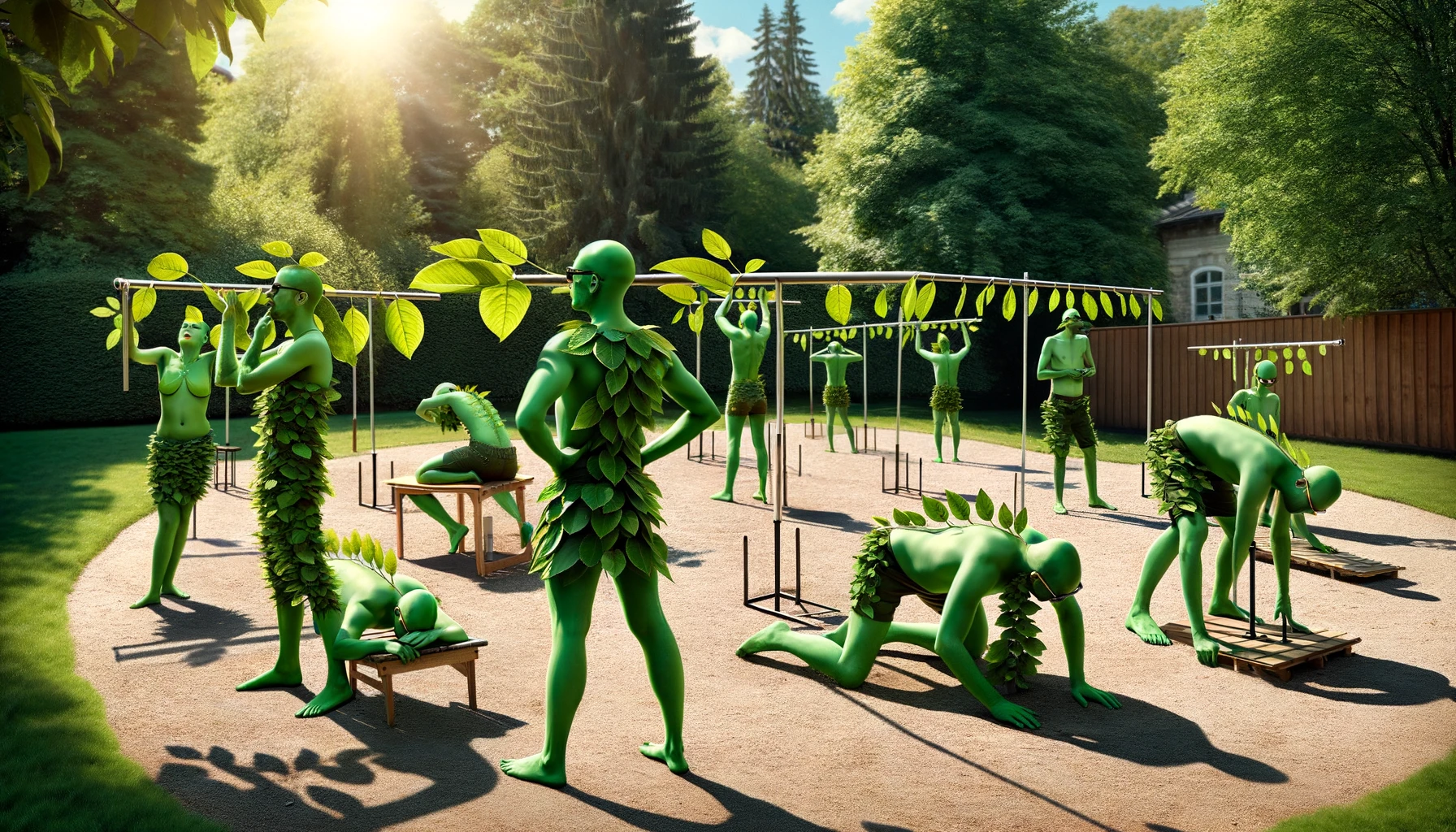Forget keto, paleo, or intermittent fasting; the latest craze promises to be the most organic and plant-based diet yet, where you don’t just eat the plants—you become the plant.
Sunbathing for Sustenance
The premise is simple yet revolutionary: “Just stand in the sun!” Advocates of the human photosynthesis diet claim that with the right mindset, a few genetic tweaks, and a lot of sunlight, anyone can convert sunlight into energy, thus eliminating the need for conventional food. “It’s the ultimate way to reduce your carbon footprint and become one with nature,” explains Dr. Chloro Phyll, the diet’s pioneer. “Why consume plants when you can harness the power of the sun directly?”
The Science (Sort of)
While traditional photosynthesis is a process exclusive to plants, algae, and some bacteria, proponents of the diet argue that human photosynthesis is within reach, thanks to advances in synthetic biology and a generous interpretation of scientific principles. Participants are encouraged to spend several hours a day in direct sunlight, wearing as little as possible to maximize exposure and, theoretically, energy absorption.
Challenges and Controversies
Critics argue that human photosynthesis overlooks minor details like human anatomy and physiology, citing the lack of chlorophyll in human cells as a significant hurdle. However, supporters dismiss these concerns as mere technicalities. “With enough green juice and positive thinking, anything is possible,” insists Phyll.
A Day in the Life
A typical day on the human photosynthesis diet starts with a morning sun salutation, not just as a yoga pose but as a literal greeting to the sun. Breakfast, lunch, and dinner are replaced with designated “sun sessions,” where dieters absorb sunlight while practicing deep breathing to facilitate the conversion of light into energy. Supplemental “soil smoothies” – a blend of organic dirt, water, and minerals – are recommended for those needing a boost in essential nutrients.
Testimonials and Tans
Early adopters of the diet report a range of outcomes, from increased energy and a deeper connection with nature to severe sunburns and an acute sense of confusion. “I’ve never felt more alive,” claims one enthusiast, sporting a chlorophyll-green tan. “Though I can’t say I’ve stopped eating entirely, I definitely crave sunlight more than snacks.”
The Verdict
As the human photosynthesis diet grows in popularity, it remains to be seen whether this green revolution will take root or wither in the shade of scientific scrutiny. In the meantime, its followers continue to bask in the sunlight, hopeful that their bodies will start to photosynthesize any day now.
